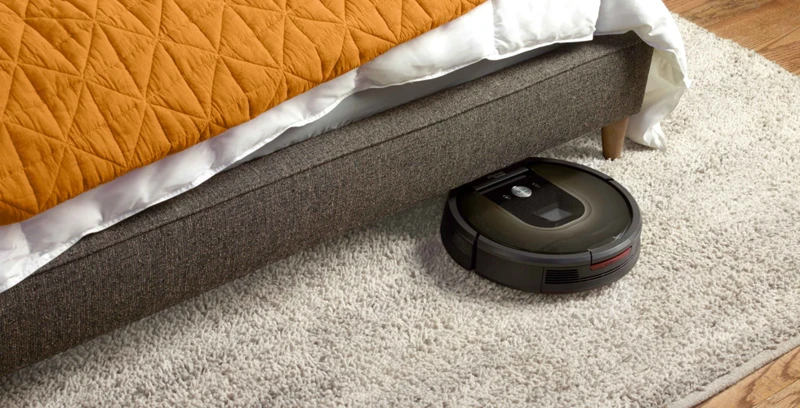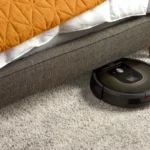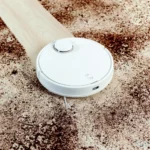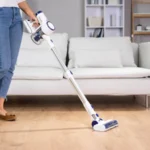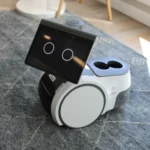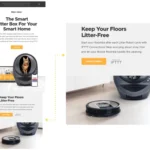In this fast-paced digital era, smart home technology has become increasingly popular. With everything from lights, thermostats, and even vacuum cleaners connected to the internet, home automation has never been easier. One of the most innovative developments in this field is IFTTT integration with smart vacuum cleaners. But what exactly is IFTTT, and what are the benefits and drawbacks of integrating it with your cleaning device? In this article, we will explore the advantages and disadvantages of IFTTT integration with smart vacuum cleaners, providing you with valuable insights to help you make an informed decision.
What is IFTTT?

Have you ever wished your smart devices could communicate with each other without any input from you? That’s where IFTTT comes in. Short for “If This Then That,” IFTTT is a free web-based service that allows you to create applets (previously called “recipes”) connecting various devices, apps and services. With IFTTT, you can automate tasks and simplify your life. In the context of smart home living, IFTTT integration can be especially powerful. In this article, we will explore how IFTTT integration can be used to enhance your smart vacuum cleaner experience.
Pros of IFTTT Integration
IFTTT integration offers a variety of pros that make smart vacuum cleaners even more efficient and convenient. Let’s take a look at them in detail in the following table:
| Pros of IFTTT Integration |
| 1. Increased automation |
| 2. Customization options |
| 3. Integration with other smart devices |
| 4. Improved cleaning efficiency |
Increased automation: By integrating IFTTT with your smart vacuum cleaner, you can automate everyday cleaning tasks such as turning on the robot every morning before you wake up or starting cleaning when you leave your house. This eliminates the need to manually turn on your vacuum cleaner and helps you save time and effort.
Customization options: IFTTT provides a range of customization options, so you can create personalized commands that fit your specific needs. For instance, you can set your smart vacuum cleaner to clean only certain areas in your home or adjust the cleaning schedule to suit your lifestyle.
Integration with other smart devices: Another advantage of IFTTT integration is the ability to integrate different smart devices in your home. This enables you to create complex routines that include multiple devices triggering actions. For example, you can set your smart vacuum cleaner to start cleaning when the front door is closed or when the room lights are turned off.
Improved cleaning efficiency: IFTTT integration can improve your smart vacuum cleaner’s cleaning efficiency through smart triggers that allow the robot to clean at specific times, in specific places, or in response to certain events. This means that you can create a cleaning schedule that aligns perfectly with your lifestyle, or configure the robot to clean up after a pet right after it finishes eating.
IFTTT integration is a great way to make your smart vacuum cleaner even more powerful and convenient. With increased automation, customization options, integration with other smart devices, and improved cleaning efficiency, you can enjoy a cleaner home with less effort on your part.
To learn more about useful IFTTT applets for vacuums, check out our article on the topic. You can also create your own personalized applets with our step-by-step guide on how to create IFTTT applets for your smart vacuum cleaner. Finally, if you want to learn more about smart home integrations for vacuum cleaners, check out our comprehensive guide on the topic.
Cons of IFTTT Integration
While IFTTT integration opens up a world of possibilities for smart appliances, there are some potential downsides to consider as well. Here are some cons to using IFTTT integration with your smart vacuum cleaner:
| Cons | Explanation |
|---|---|
| Learning curve | IFTTT can be complicated and overwhelming to learn for those who are not familiar with automation and coding. |
| Potential technical issues | Because IFTTT relies on integrations between multiple devices, there may be technical issues that arise with compatibility and connectivity. |
| Decreased privacy | By integrating your smart vacuum cleaner with IFTTT, you may be sharing personal data and information that could compromise your privacy. |
It is important to weigh the benefits against the potential drawbacks before deciding whether or not IFTTT integration is right for you and your smart vacuum cleaner. While the added convenience and automation can be a major selling point, the risks to privacy and potential complications should also be taken into consideration.
Advantages of Using IFTTT Integration with Your Smart Vacuum Cleaner
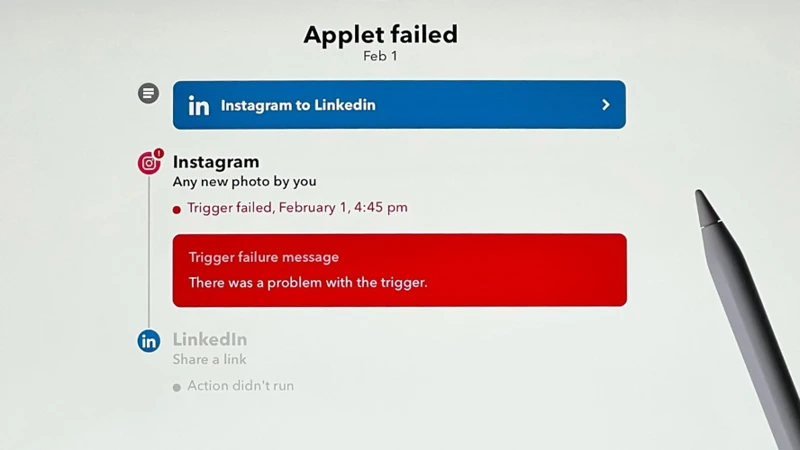
Are you tired of manually scheduling your smart vacuum cleaner? Do you want to increase automation and streamline the cleaning process? IFTTT (If This Then That) integration may be the solution you’ve been looking for. By connecting your smart vacuum cleaner with other devices and triggering automated actions based on specific conditions, you can improve the efficiency and effectiveness of your cleaning routine. Let’s take a closer look at the benefits of using IFTTT integration with your smart vacuum cleaner.
1. Increased Automation
With IFTTT integration, your smart vacuum cleaner becomes even more automated, which is one of the biggest advantages of using this technology. Let’s take a look at the benefits of increased automation in more detail:
Saves Time: By automating certain tasks, you can save a significant amount of time. For example, you can create a “recipe” with IFTTT that will automatically turn on your smart vacuum cleaner when you leave the house.
Reduces Manual Effort: The increased automation also means less manual effort on your part. You can set the rules and let IFTTT and your smart vacuum cleaner do the work for you.
Improves Consistency: With IFTTT, you can create consistent cleaning schedules that are automatically executed by your smart vacuum cleaner. This consistency in cleaning schedule leads to a cleaner and more hygienic living space.
Here is an HTML table that highlights the benefits of increased automation:
| Benefits of Increased Automation |
|---|
| Saves time |
| Reduces manual effort |
| Improves consistency |
Increased automation through IFTTT integration can help you keep your home cleaner and save time and effort in the process.
2. Customization
One of the most significant advantages of using IFTTT integration with your smart vacuum cleaner is the ability to fully customize how your device interacts with the rest of your home automation system. By creating your own unique and personalized commands and triggers using IFTTT applets, you can tailor your smart vacuum cleaner’s functionality to meet your specific needs and preferences.
Here are a few examples of the customization options available with IFTTT integration:
- Create a custom cleaning schedule that works best for your lifestyle by setting specific times and cleaning routines.
- Set your smart vacuum cleaner to only clean in certain rooms or areas of your home.
- Create location-based triggers so that your smart vacuum cleaner starts cleaning as soon as you leave the house.
- Integrate your smart vacuum cleaner with other smart home devices, such as smart thermostats or security cameras, to create a fully integrated home automation system.
With the endless options available through IFTTT integration, you can truly make your smart vacuum cleaner work for you and your specific needs. Whether you want your device to only start cleaning when you’re not home, or you want to use voice commands to activate your smart vacuum cleaner, IFTTT allows you to create the perfect custom commands that fit your lifestyle.
Keep in mind, however, that the customization process may take some time and patience to perfect. It can be perplexing at times, and you may need to troubleshoot and make adjustments until you find the right commands and triggers that work best for you. But with IFTTT’s user-friendly interface and the extensive online community that shares applets and commands, you’re sure to find exactly what you need to create a fully functional and customized smart vacuum cleaning system.
3. Integration with Other Smart Devices
One of the major advantages of using IFTTT integration with your smart vacuum cleaner is the ability to seamlessly integrate it with other smart devices in your home. This allows for a truly connected and automated home ecosystem.
1. Smart Speaker Integration: Imagine you’re sitting on the couch watching TV, and suddenly a spill happens. Instead of getting up to grab your phone or vacuum, you can simply use voice commands through your Amazon Echo or Google Home to start the cleaning process. It’s as easy as saying “Hey Google, tell my vacuum cleaner to start cleaning”.
2. Smart Home Security: You can integrate your smart vacuum cleaner with your home security system, allowing it to automatically start cleaning when the system is armed and no one is home. This ensures that your home remains clean and tidy while also providing an added layer of security.
3. Smart Lighting: With IFTTT integration, you can connect your smart vacuum cleaner with your smart lighting system. This means that the lights can automatically turn off when the vacuum is cleaning and turn back on once it’s done. This saves you the trouble of having to manually control the lights while also making sure that the vacuum cleaner doesn’t miss any spots.
4. Smart Thermostat: IFTTT integration allows your smart vacuum cleaner to work in harmony with your smart thermostat. Once the temperature in your home reaches a certain level, the vacuum cleaner can start working to ensure that your home is free from dust and debris. This makes sure that your home’s temperature is always comfortable and healthy.
Having a variety of smart devices in your home and integrating them through IFTTT can help streamline many of the daily tasks and make life much easier. With seamless integration between all of your smart devices, you’ll be able to create a more efficient, comfortable, and enjoyable living environment that is tailored to your specific needs.
4. Improved Cleaning Efficiency
When it comes to smart home appliances, efficiency is key. The integration of IFTTT with your smart vacuum cleaner can significantly improve its cleaning efficiency. Let’s take a look at some ways in which this integration can improve your overall cleaning experience.
Table:
| Improved Cleaning Efficiency | Description |
|---|---|
| 1. Scheduled Cleaning | With IFTTT, you can schedule your smart vacuum cleaner to clean at certain times and days of the week. This can ensure that your floors are always clean without requiring you to manually start the vacuum every time. |
| 2. Targeted Cleaning | By setting up specific triggers and actions in IFTTT, you can ensure that your vacuum cleaner only cleans certain areas or rooms in your home. This can be ideal for those who have pets or high-traffic zones that require more frequent cleaning. |
| 3. Multi-Device Control | If you own more than one smart vacuum cleaner, you can control all of them through IFTTT. This can be helpful in larger homes or if you have multiple levels that require different cleaning schedules. |
One of the most significant advantages of using IFTTT integration with your smart vacuum cleaner is the increased automation that it offers. By taking care of scheduling and targeted cleaning, IFTTT can save you time and effort while ensuring that your home’s floors are consistently clean. Additionally, the ability to control multiple devices through one platform simplifies the cleaning process even further.
While there may be a learning curve with using IFTTT and potential technical issues that arise, the overall benefits of improved cleaning efficiency make it a worthwhile integration for any smart home owner looking to streamline their cleaning routine.
Drawbacks of Using IFTTT Integration with Your Smart Vacuum Cleaner
While integrating IFTTT with your smart vacuum cleaner brings a plethora of benefits, it’s important to acknowledge that there are also some drawbacks to consider. In this section, we will discuss the potential downsides of using IFTTT integration with your device. From a steep learning curve to decreased privacy, it’s essential to weigh both the positives and negatives before making a decision.
1. Learning Curve
When it comes to integrating IFTTT with a smart vacuum cleaner, one of the potential drawbacks is the learning curve that comes with using IFTTT. While the flexibility and customization offered by IFTTT can be a major advantage, it can also make the platform more challenging to navigate for some users.
The main challenges of learning IFTTT integration for smart vacuums include:
| Challenge | Description |
|---|---|
| Complexity | Although IFTTT is designed to be user-friendly, it can still be complex for some users. Understanding how to create and use applets and navigating through the different options can present a challenge. |
| Technical Knowledge | Using IFTTT effectively may require a certain level of technical expertise, particularly when it comes to setting up integrations with other smart devices. This can be a barrier for some users who are unfamiliar with APIs and other technical aspects of smart home technology. |
| Time Investment | Creating and testing applets can be time-consuming, particularly if you’re new to IFTTT integration. The learning curve can be steep, requiring an investment of time and effort to get the most out of the platform. |
However, despite the challenges, the benefits of using IFTTT integration may outweigh the learning curve:
With increased familiarity, users may find that the time investment required to learn IFTTT is well worth the benefits. Additionally, there are plenty of tutorials and resources available online to help users get started with IFTTT integration, making the learning curve less daunting.
Ultimately, whether or not the learning curve of IFTTT integration with a smart vacuum is worth it will depend on the individual user’s needs and preferences. For those who are willing to put in the time and effort, the customization and automation offered by IFTTT can make it a powerful tool for managing a smart home.
2. Potential Technical Issues
As with any technology, there may be some potential technical issues when integrating IFTTT with your smart vacuum cleaner. While these issues may not be exclusive to IFTTT integration, it is still important to consider them before implementing the integration.
One technical issue that may arise is connectivity problems. When your smart vacuum cleaner is connected to IFTTT, it will rely on a stable and strong internet connection. If there are any issues with your Wi-Fi network or internet service provider, then the connection between IFTTT and your smart vacuum cleaner may be interrupted. This can cause your cleaning schedule to be disrupted and even prevent your smart vacuum cleaner from functioning properly.
Another potential technical issue is related to compatibility. Not all smart vacuum cleaners are compatible with IFTTT, so it is important to check whether your model supports this integration before attempting to set it up. Additionally, it is possible that some features of your smart vacuum cleaner may not be fully supported by IFTTT. This may limit your ability to create certain automated tasks and reduce the overall functionality of your smart vacuum cleaner.
Lastly, security concerns may arise when integrating IFTTT with your smart vacuum cleaner. This is because IFTTT may require access to your personal information and data in order to function properly. If there are any security breaches or vulnerabilities in IFTTT’s system, then your personal information may be at risk.
To summarize, potential technical issues when using IFTTT integration with your smart vacuum cleaner may include connectivity problems, compatibility issues, and security concerns. However, these issues can be mitigated by choosing a compatible and secure smart vacuum cleaner, ensuring a stable Wi-Fi network, and carefully reviewing the permissions required by IFTTT.
3. Decreased Privacy
Using IFTTT integration with your smart vacuum cleaner might have some drawbacks, and one of them is privacy concerns. Though IFTTT lets you automate your smart home devices, apps, and services, it requires granting various permissions to perform certain actions.
When integrating your smart vacuum cleaner with IFTTT, you’ll be allowing access to your device’s data and activity. This means that IFTTT will be able to collect valuable information about your home, schedule, and cleaning habits. Although using a smart vacuum cleaner can provide convenience and ease, it also requires sharing your data with third-party services.
It is important to note that IFTTT has a strong privacy policy that commits to protecting users’ data privacy and security. However, there is still a risk that your data might be leaked or hacked. To mitigate this risk, IFTTT users are encouraged to be vigilant and exercise caution when granting permissions to third-party applications, including vacuum cleaners.
One way to stay safe is by reviewing and revoking permissions regularly, checking which applications have access to your device, and disabling permissions for apps that are no longer in use. Also, you can limit the amount of data shared by your smart vacuum cleaner by providing only the necessary permissions.
Using smart vacuum cleaners with IFTTT integration also exposes your network to potential security risks. Since IFTTT relies on the internet to communicate with your device and trigger actions, it could make it easier for hackers to access your home network through vulnerabilities in the integration. It is essential to secure your home network by using strong passwords, enabling two-factor authentication, and keeping your smart vacuum cleaner’s firmware up-to-date.
Balancing the convenience of smart home automation with data privacy and security risks is a personal choice. It’s up to you to decide whether IFTTT integration with your smart vacuum cleaner is worth the potential privacy concerns. By taking the necessary measures to protect your data and network, you can enjoy the benefits of smart home technology without sacrificing your privacy.
| Pros | Cons |
|---|---|
| Increased Automation | Decreased Privacy |
| Customization | Potential Technical Issues |
| Integration with Other Smart Devices | Learning Curve |
| Improved Cleaning Efficiency |
Conclusion
In conclusion, integrating IFTTT with your smart vacuum cleaner can offer many benefits, but it also comes with some potential drawbacks. The increased automation and customization options that IFTTT offers can lead to improved cleaning efficiency and integration with other smart devices in your home. However, there is a learning curve involved in using IFTTT, and technical issues can arise that may require troubleshooting. Additionally, privacy concerns may arise from granting access to personal data and device control to third-party services like IFTTT.
It is important to weigh the pros and cons carefully before deciding to integrate IFTTT with your smart vacuum cleaner. If you are comfortable with using technology and are willing to invest some time and effort into learning how to use IFTTT, the benefits can be significant. However, if you value your privacy and prefer to keep your smart home devices separate, then it may be best to avoid IFTTT integration. Ultimately, the choice is yours and should be based on your personal preferences and needs.
Frequently Asked Questions
1. Can I connect any smart vacuum cleaner to IFTTT?
It depends on the brand and model of your smart vacuum cleaner. Check if there is an IFTTT channel available for your device.
2. Can I create my own IFTTT applets for the smart vacuum cleaner?
Yes, you can create custom applets using the IFTTT platform. This allows for even more automation and customization.
3. Are there any fees associated with using IFTTT integration with smart vacuum cleaners?
IFTTT is a free service to use, although some smart vacuum cleaners may have monthly subscription fees for using their respective apps.
4. How does IFTTT integration improve cleaning efficiency?
IFTTT integration can help coordinate and schedule cleaning routines with other smart devices in your home, optimizing the cleaning process and reducing the need for manual intervention.
5. Does IFTTT integration compromise the security of my smart vacuum cleaner?
There is always some risk when integrating devices with third-party services, so it is important to research the security measures in place and ensure proper authentication protocols are followed.
6. Can I turn on my smart vacuum cleaner with a voice command through IFTTT?
Yes, you can use IFTTT to create voice commands for your smart vacuum cleaner through virtual assistants like Amazon Alexa or Google Assistant.
7. How does IFTTT integration with other smart devices improve automation?
By coordinating the actions of multiple devices, IFTTT integration can create more complex and efficient automation routines that respond to various triggers and conditions.
8. How difficult is it to set up IFTTT integration with my smart vacuum cleaner?
The difficulty level can vary depending on the specific devices being used, but in general, setting up IFTTT integration can be done with relative ease, especially with the help of available tutorials and guides.
9. Can I use IFTTT to set up vacuuming routines for different rooms in my home?
Yes, you can set up custom routines for individual rooms or areas in your home using IFTTT.
10. Can I control my smart vacuum cleaner remotely through IFTTT?
Yes, you can use IFTTT to control your smart vacuum cleaner from anywhere with an internet connection using your smartphone or tablet.
